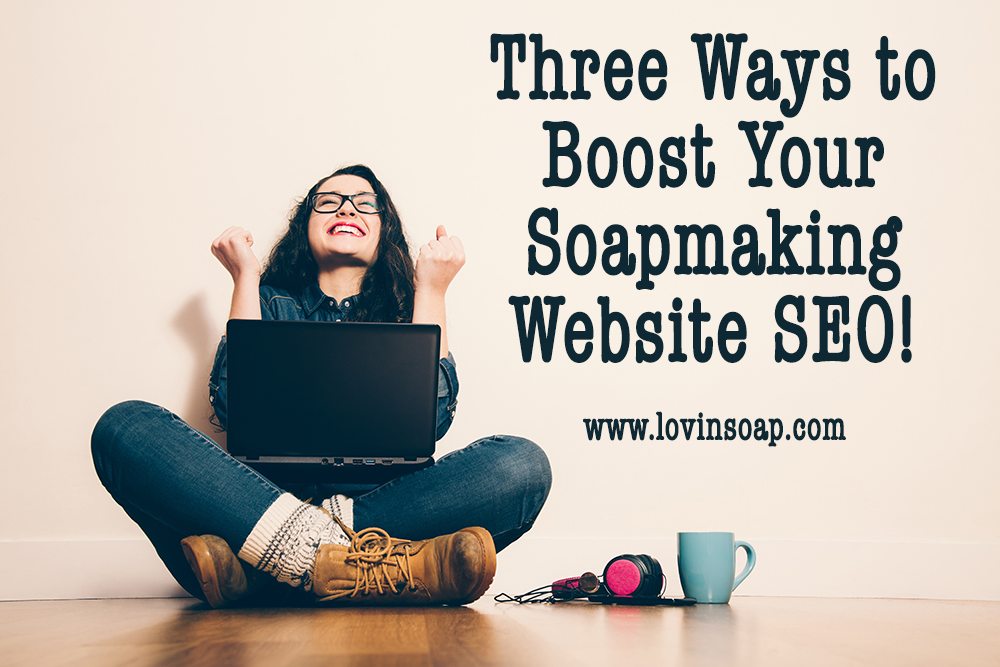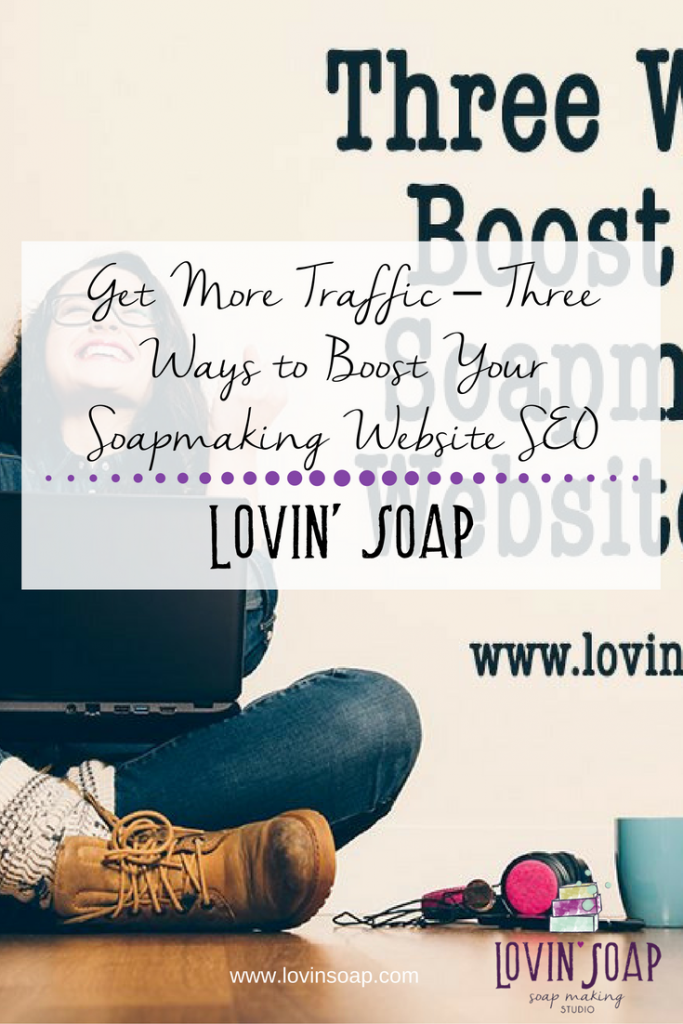If you have a website, there are many ways to boost your SEO (search engine optimization). SEO is how easy it is for people to find your site when they perform an Internet search.
This article will discuss three ways to optimize your website for search engines:
- Creating a FAQ’s page
- Blogging
- Naming images
Good SEO is all about content. Your website should have quality keyword-rich content throughout.
1. Creating a FAQ’s Page
One easy way to provide keyword-rich content is by having a FAQ’s (frequently asked questions) page. A FAQ’s page lists commonly asked questions and answers. A consumer should be able to go to your FAQ’s page and get many potential questions answered without having to email/call you.
Topics can include:
- What products you make
- What ingredients you use
- Do you wholesale
- Where you’re located
- What payment you take
- How to use your products
Check out the FAQ’s pages for some of your favorite companies to see what they include. Here are some examples:
http://juniperridge.com/pages/faq
http://bodyecology.com/faqproducts.php
https://www.drbronner.com/customer-service/faqs/
http://www.lushusa.com/on/demandware.store/Sites-Lush-Site/en_US/Lushopedia-Start <– not labeled as a FAQ’s page but is similar. By listing ingredients they are creating content rich in keywords.
So, what should go on your FAQ’s page to help people find you through searches? To help you decide, you have to delve into the mind of your customer.
Visualize. Sit down at your computer and think about the searches that a customer will perform to find your products.
Do you make soap? Perhaps your customer would search natural soap, handmade soap, soap Kansas city, organic soap, goat milk soap, etc.
Do you make scrubs? Perhaps your customer would search natural body scrubs, sugar scrubs, etc.
Try to incorporate these keywords into your FAQ’s page. Here are some examples:
Your Location
Why? Location is a huge keyword when it comes to a product-based business. Many times people want to support local business, so they search for it. If someone is looking for soap in Kansas City and you have Kansas City throughout your website (and on your FAQ’s page) then your website will come up for that search.
Example Search Terms: soap Kansas City, handmade soap Missouri, etc.
Example FAQ Page Insert
Where are you located? Our handmade soap is made in Kansas City, Missouri. You can find us at stores around the area including Columbia, MO, Lees Summit, MO, Topeka, KS and Lawrence, KS, as well as many other cities in the U.S. (link to page that lists your retail outlets)
Bonus – Above, we hit our city plus surrounding cities so that if someone searches for soap nearby, we come up.
Information on Wholesale
Why? Many retails stores will perform Internet searches to find products to stock. If you wholesale your products, make sure you have that information on your website. You don’t have to list pricing or anything like that, just mention that wholesale opportunities are available and provide a form for interested parties to fill out. I recommend having a wholesale page, but adding a blurb about wholesale to your FAQ’s page will only help.
Example Search Terms: wholesale body products Missouri, wholesale soap, soap for my retail store, etc.
Example FAQ Page Insert
Do you offer wholesale opportunities? Prairie Soap Company provides wholesale opportunities for shops and retail stores that meet our wholesaler requirements. We wholesale our complete range of handcrafted soap and body care products. To get more information, visit our wholesale page. (link to wholesale page)
Ingredients
Why? Ingredients make up a majority of search words when it comes to consumers searching for bath and body products.
Example Search Terms: coconut oil soap, shea butter soap, soap with lavender, etc.
Example FAQ Page Insert
What is your soap made of? Our handmade soap is made with skin-loving ingredients including:
Coconut oil – (details)
Olive oil – (details)
Essential oil – (details)
Think of other questions that will both be beneficial to your customers and will also help with adding keyword-rich content to your website.
2. Blogging
What do search engines like more than quality keyword-rich content on your website?
They like quality keyword-rich content that is CONTINUALLY BEING UPDATED. One of the best ways to serve up fresh content is by blogging.
So what do you blog about? Here are 5 blog topic ideas:
- Highlight an ingredient. Tell people about it, what it can do for them and why/how you use it in your products. KEYWORD FOCUS: Ingredients such as coconut oil and products such as handmade soap.
- Show your customers your studio. People love to see where you’re whippin’ up their goods. KEYWORD FOCUS: Handmade, handcrafted and location words.
- Top 10 lists. Top 10 lists can be short, sweet and super keyword heavy. For example, you can blog about the top 10 reasons to use handmade soap.
- If you wholesale, blog about your wholesalers. Did you just land a new shop? See if they will let you interview them and introduce them to your customers as a local retail option for them to purchase from. KEYWORD FOCUS: Location words, product words and if the shop is big, having their name on your website could even grab hits for when they are searched for.
- Highlight a product. Choose one product and tell everyone why it’s the best product in the universe.
Dishing up fresh content on a recurrent basis will please the search engine gods. Blogging is the way to go. Ideally you want your blog to be hosted on your URL so that the search hits are directed to your website/products. Your host can usually help you install and setup WordPress or whatever their standard blogging software is. WordPress is my #1 choice.
3. Naming Images
People are conducting more and more image searches these days. Images can generate tons of traffic to your website.
Anytime you upload product images to your website, your social media or your blog make sure they are named using keywords and relevant names so that they will show up in image searches. For example:
image1.jpg (bad) | handmade-lavender-soap.jpg (good)
istock_ksdf0wuwe98jf.jpg (bad) | natural-peppermint-soap.jpg (good)
Be creative with your naming. It doesn’t have to be completely relative to the image. For example, let’s say that on my product page for lavender soap I have three pictures of lavender soap. I would name one lavendersoap.jpg, one handmadesoapkansascity.jpg and one wholesalelavendersoap.jpg to add some variety and hit more of my keywords.
When you upload an image or add an image to your website, be sure to include alt text. In the line of HTML below, img src is the file name and alt is the alternative text that is “spoken” to search engines to tell them what the image is.
<img src=”lavender-soap.jpg” alt=”Lavender Soap” />
<img src=”wholesale-soap-kansascity.jpg” alt=”Wholesale Soap Kansas City” />
Most website building applications allow you to add this alt text when you upload an image to your website. WordPress does also for blogging or pages. Be sure you’re taking advantage of it!
I hope that these three tips to optimize your site will help in getting traffic to your website! If you have any questions, please comment below!
Happy Soaping and Website Optimizing!
-Amanda Gail





So I don’t know how I missed this post when you originally wrote it. I was smack in the middle of my redesign with Benjamin. Maybe we weren’t quite there yet and I just forgot to go back and look. Regardless. SUPER helpful. You gave me more blog topics. I get so hung up on blogging to my ideal market (and I still don’t quite know what that is other than ppl that will buy my soap), that I just don’t blog. Thank you!
Naming images is one of the hardest for us to remember! Without fail, we upload the image and THEN go back to rename it…and then it’s permalinked and too late 🙁
Oh I’m so with you! It really is hard to remember. 🙂